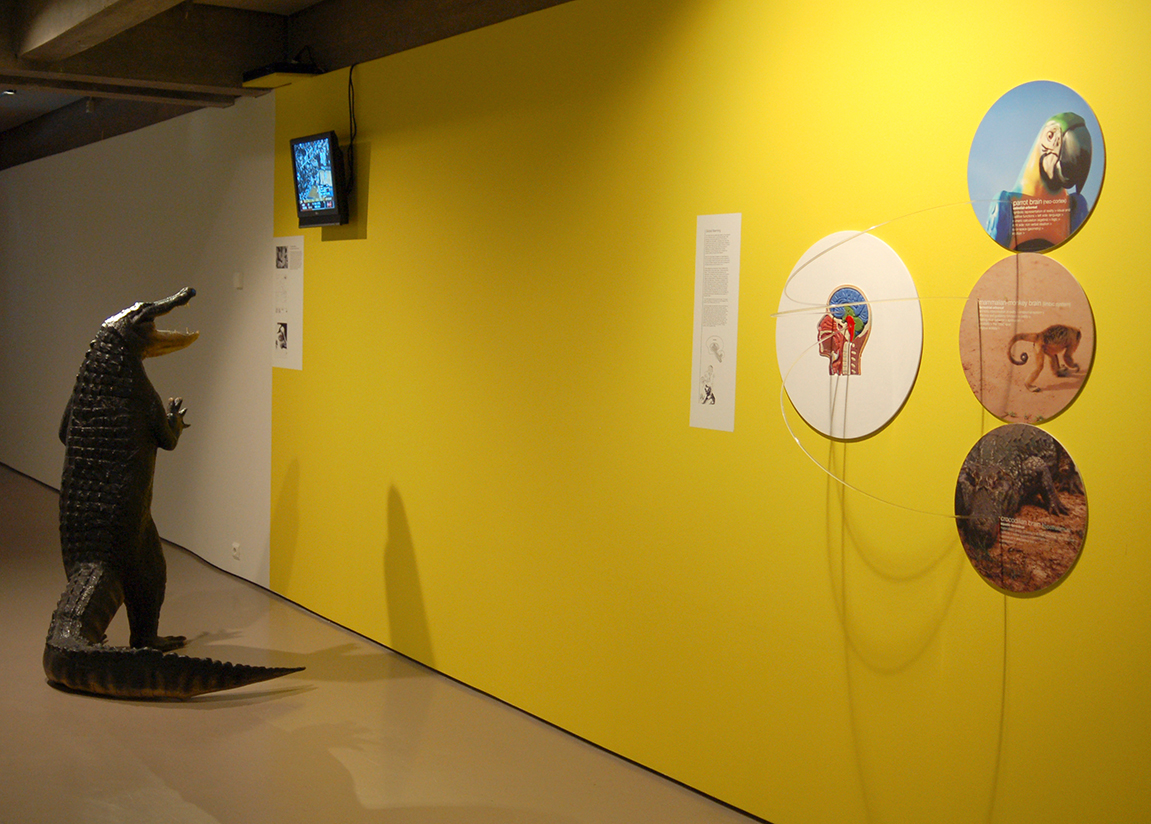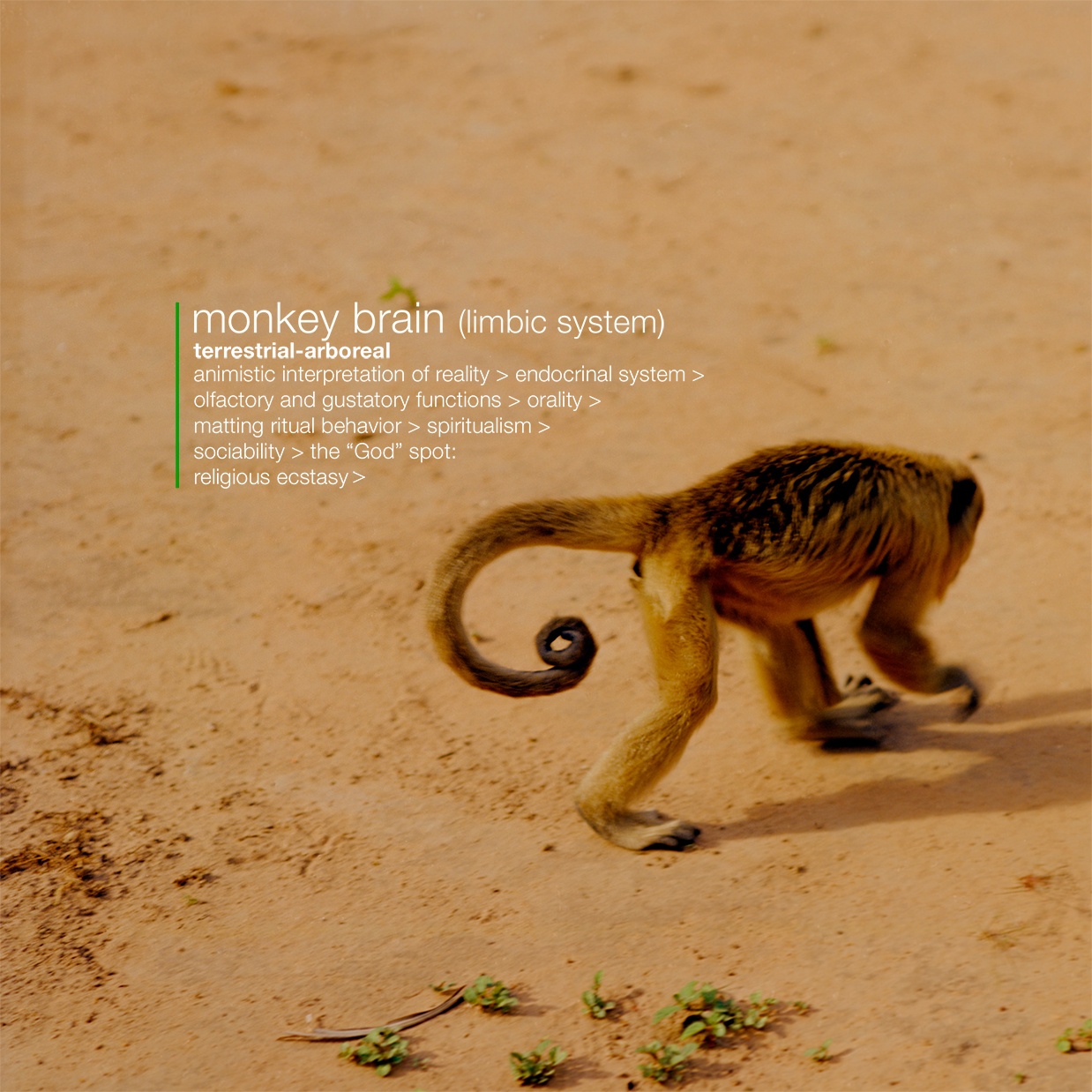Animal Paintings and Animals In the Brain
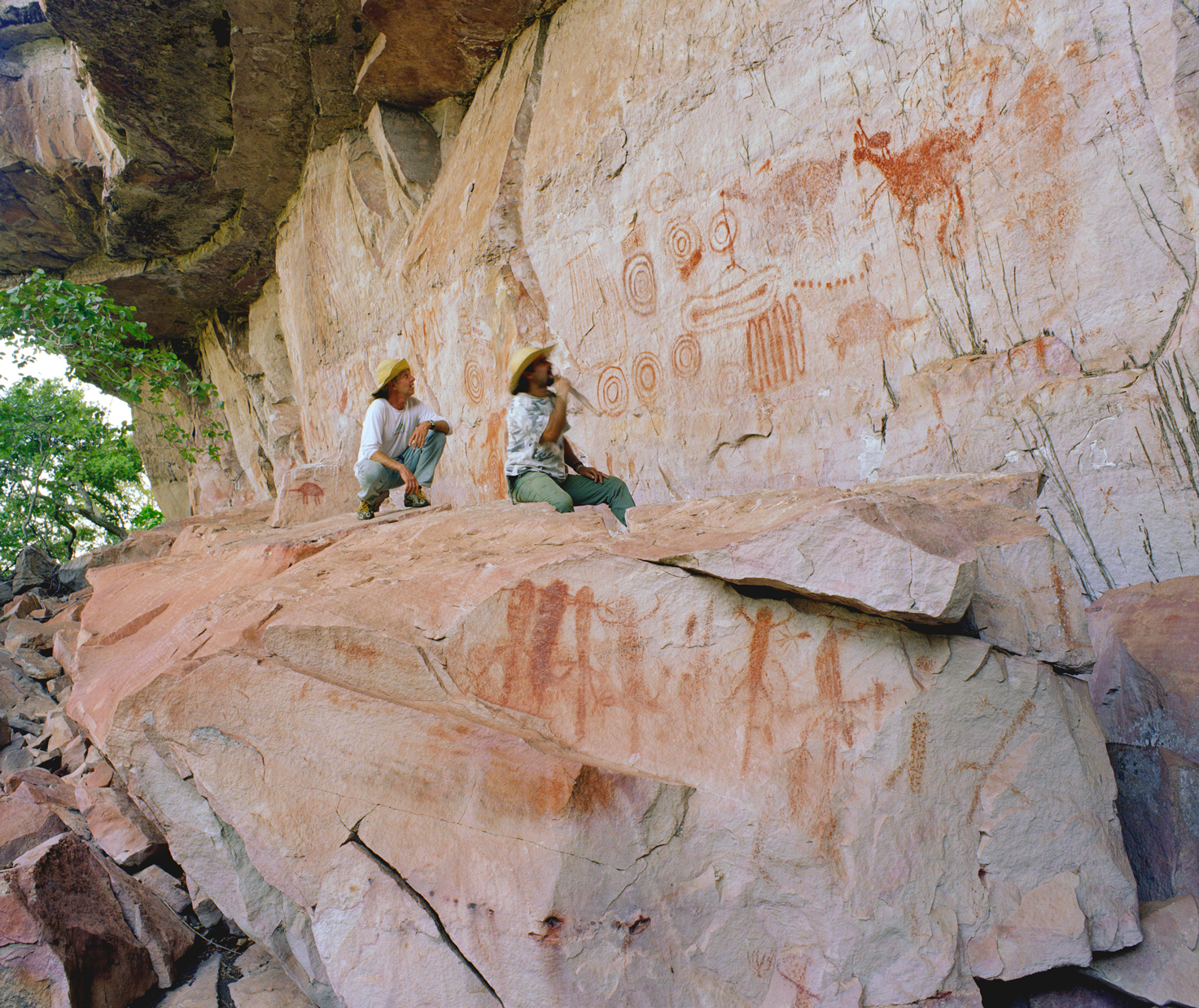
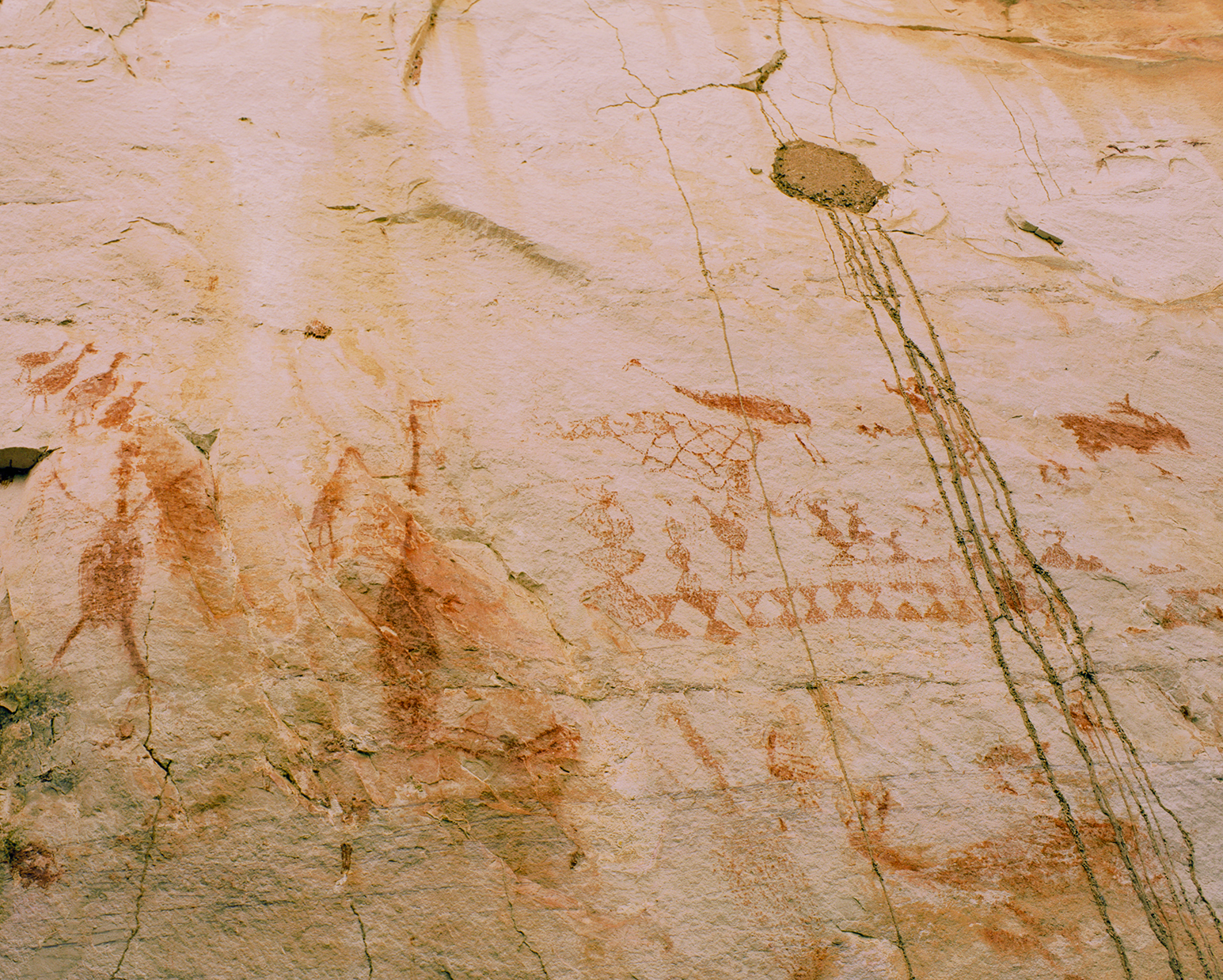
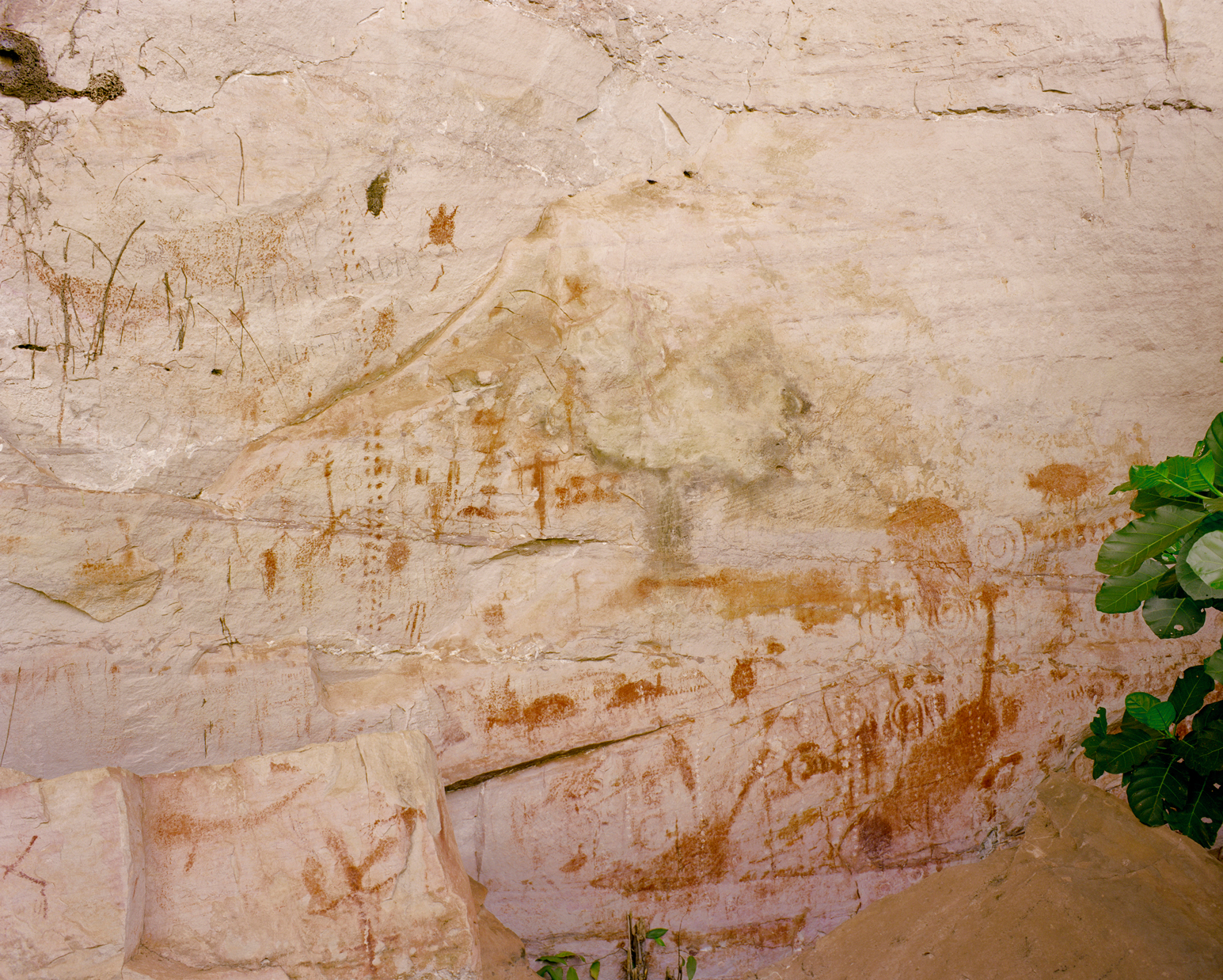
We climbed for more that five hours to reached the archeological site of Frei Canuto on the cliffs of Chapada dos Guimarães. Frei Canuto is considered among the earliest ceremonial settlements in Brazil's central plateau. Its date is estimated to be between twelve and ten thousand years. When we arrived Helio started a fire and collected water from a waterfall to make coffee. Arturo took me along the enormous walls to see the paintings. The colors used were red and white and the motives ranged from evenly spaced dots and concentric circles to a variety of geometric figures, animals, insects, birds and human representations. One of the paintings depicted the gradual transformation of human into reptilian form, another combined animals: a small ostrich riding on top of a large deer featuring human arms. We discussed the details in the images while sipping the sweet back coffee Helio had made.
Maybe those animal-human transformations depicted in the wall paintings were not just a matter of obscure primitive spirits. These shamanistic representations could have illustrated a complex understanding of the human condition by interpreting our mental and psychological features through animal behavior. (1)
Most of the consequences of climate change are still unknown to us. What if high levels of radiation no longer filtered by the ozone layer of the atmosphere produce mutations in our own brains? What if in the near future humans evolve into almost different species?
A theorization of mutations in the human brain (2) could be established through animal allegories:
a) The crocodilian brain (hypothalamus). In this model of the human psyche the massive resurgence of religious fundamentalism is interpreted as the mutation of the crocodilian brain.
b) The monkey brain (limbic system). The erosion of the public sphere and the decay of social institutions worldwide can be perceived as the mutation of the mammalian-monkey brain.
c) The parrot brain (neo-cortex). The isolation and disenfranchisement of vast sectors of the educated population has given rise to the search for alternative forms of knowledge and communication. Interpreted as mutations in the parrot brain, these alternative forms involve the production of hybrid meta-languages, the establishment of new boundaries for logical reasoning, non-verbal ideation and sensorial perception.
NOTES
1. During the sixteenth and seventeenth centuries anatomists and surgeons believed the human brain was inhabited by animal spirits. "According to Galen, the vital spirit is carried to the brain by the carotid artery. There it is divided among the channels of the rete mirabile where it becomes transformed into animal spirit. This animal spirit slowly flows into the ventricles and then into the brain where it becomes the activator of brain function" pg. 19. "Hoffman in 1695 stated: In the natural state the animal spirits move evenly through the brain, spinal medulla and nerves... If the motion of these spirits becomes disordered, diminished or fully abolished, very severe diseases arise" pg.. 24, Louis Bakay, M.D, F.A.C.S. An Early History of Craniotomy, Charles C Thomas publisher, 1985, Springfield, Illinois.
2. See Carl Sagan, The Dragons of Eden, speculations on the evolution of human intelligence, The Random House Publishing Group, NY 1977
